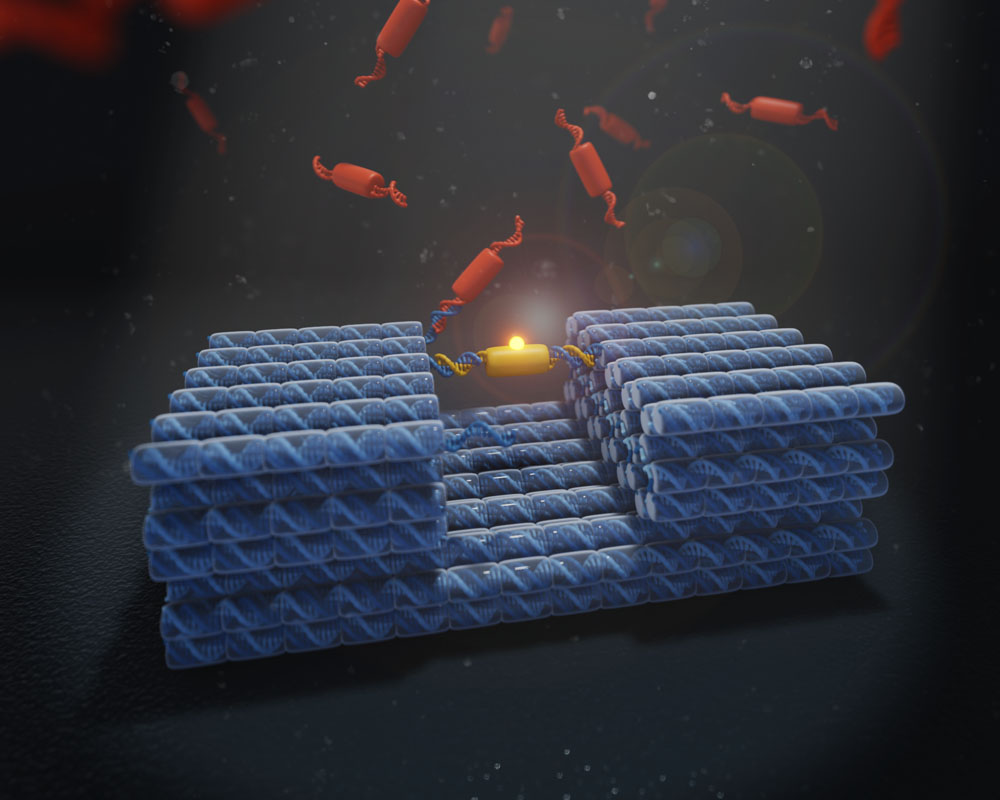| Jun 06, 2022 |
Autonomous machines inspired by nature
(Nanowerk News) A recent paper in ACS Nano ("Rapid Exchange of Stably Bound Protein and DNA Cargo on a DNA Origami Receptor") describes how the research team, including lead author Dr James Brown, A/Prof Lawrence Lee and Dr Jonathan Berengut of UNSW Sydney, designed and built stable nanomachines that can quickly respond to their environment.
|
|
To withstand the challenging conditions within living organisms, molecular machines need to be durably constructed for continuous operation over long periods. At the same time, they need to adapt to different needs and to their changing environment by quickly swapping out molecular components to reconfigure the machinery.
|
|
‘We adopted a synthetic biology approach to this problem by constructing an artificial nanoscopic machine using DNA and protein components,’ says A/Prof Lee.
|
|
He and his team engineered molecular machines by folding DNA strands into three-dimensional shapes, a technique called DNA origami. They showed that their DNA nanomachines could carry both DNA and protein cargo, and would generally be compatible with other biomolecules and nanoparticles. The cargo binds at multiple sites to the DNA receptor, and can be displaced by new cargo via a competitive-binding process, when other cargo is present in solution.
|
|
“It’s the first synthetic system that has used this so called ‘multi-site competitive exchange’ principle,” he says.
|
 |
| Artistic depiction of DNA nanomachine carrying protein cargo. (Image: Jonathan Berengut)
|
|
Other mechanisms have been reported that confer the dual properties of robustness and rapid exchange with DNA molecules, but until now, this dichotomy has not been possible with other biomolecules.
|
|
“What we’re actually doing is looking at the way biology builds machines and trying to see whether we can replicate that or learn about the way biology does things,’ says A/Prof Lee.
|
|
‘A good example of a biological machine is the bacterial flagellar motor. You can purify this motor, put it in the fridge and it stays like a stable machine. But if you put it into its natural cellular environment, it will be changing over its parts constantly.
|
|
‘So that presents a kind of a chemical contradiction. How can something be very, very stable but at the same time know when it needs to change its parts? It would be like driving a car on the bitumen road and having it automatically change its tyres over when it hits a four-wheel drive track.
|
|
‘Biology actually does this itself. It detects the change in the environment and changes the part over. So we were asking, “Well, how does that work? There was a theory published a little while ago on how this might work in biology. And this paper is an implementation of this theory using DNA origami. We used an idea in biology to create a completely synthetic system that can rapidly detect and respond to changes in its environment.’
|
|
It is too early to say how such a system would be applied but the potential exists for versatile technology to be developed.
|

